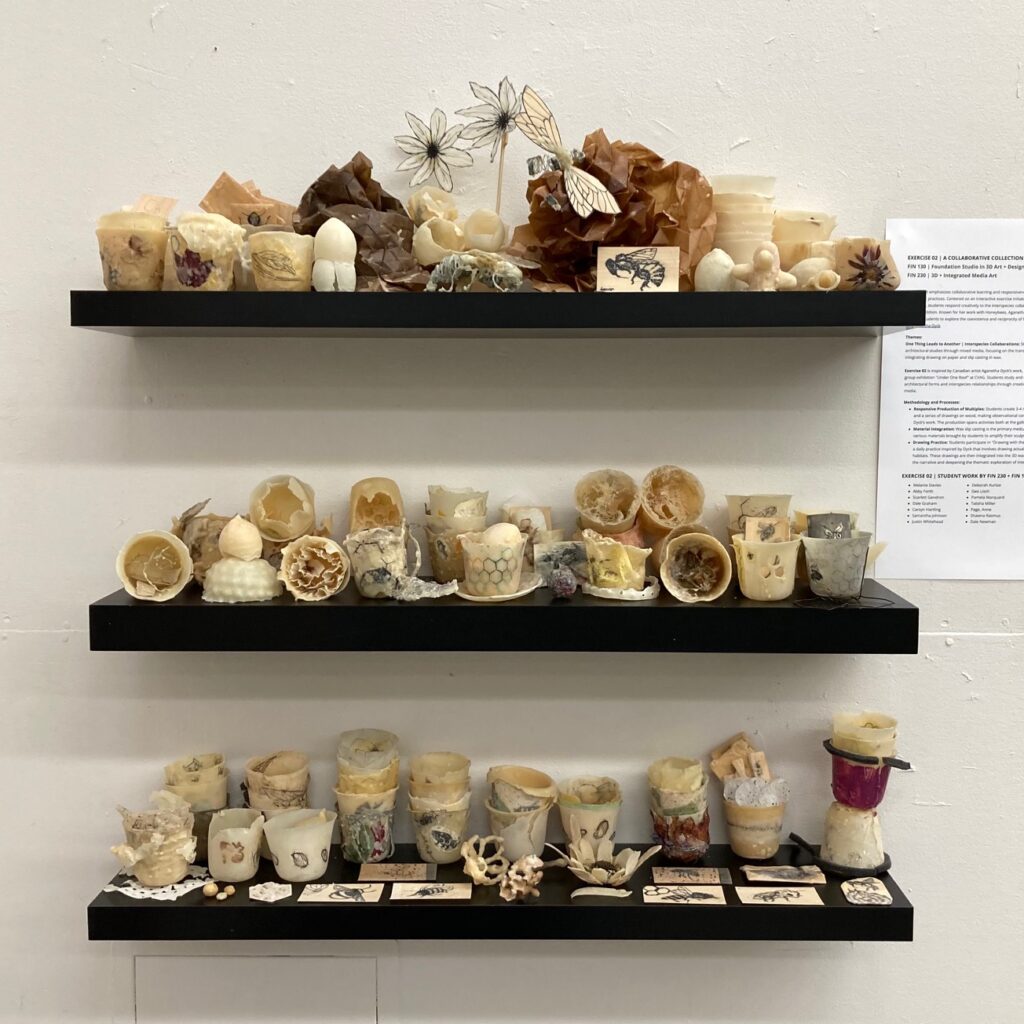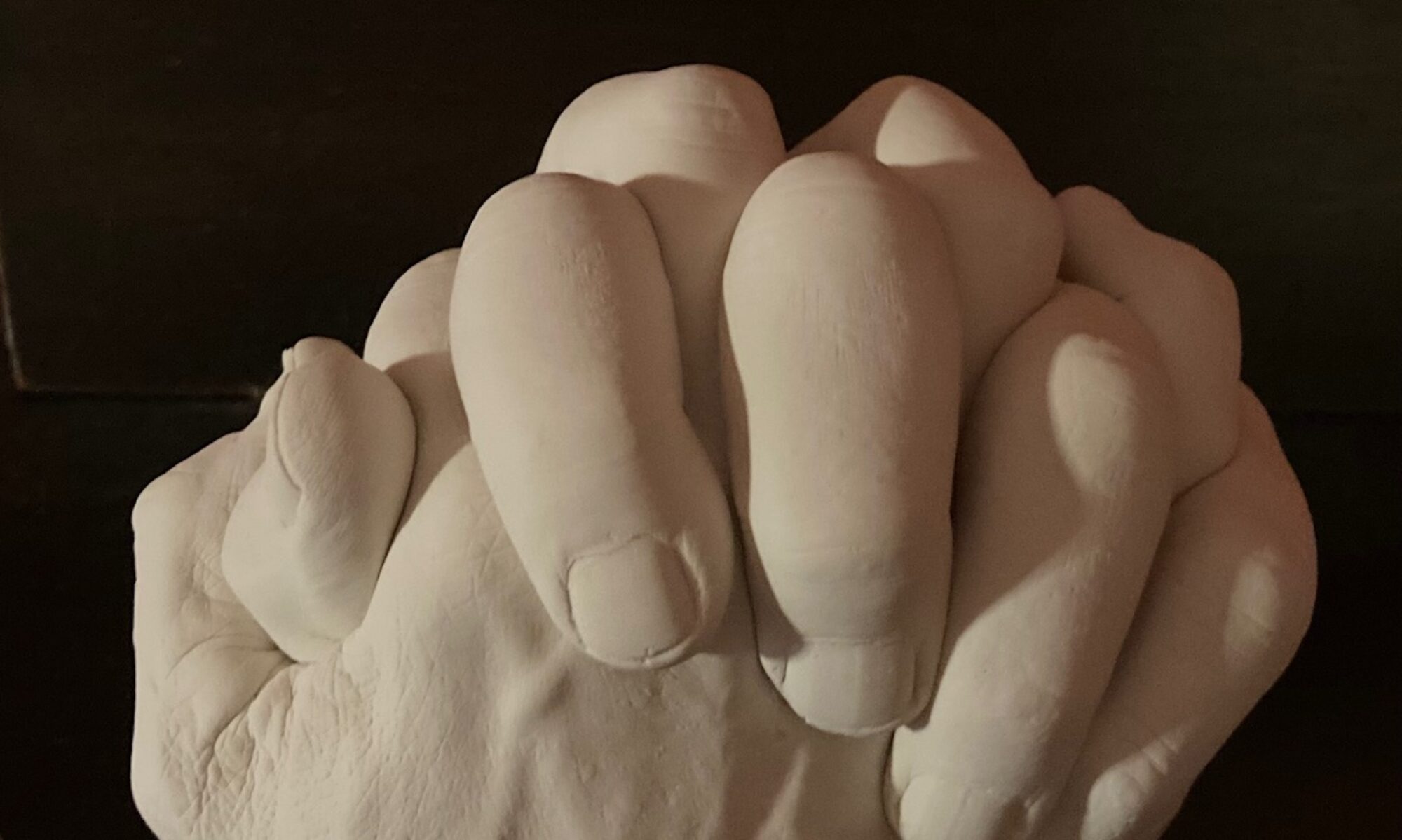Unit 2 Research Assignment (Experiential): 3D Form Applications in Art and Design
(I removed the pdf file that had been embedded here, as I made additional works and comments on October 17th – what follows stands as my experiential record for the Unit 2 Research project and Exercise 2)
TOGETHER APART, UNDER ONE ROOF: CVAG Field Visit October 10, 2023
This show is a retrospective of works by Aganetha Dyck, Diana Thorneycroft, and Reva Stone. All three work and live in Manitoba, and they have shared studio space and unconditional artistic support for nearly three decades. We were invited to view the exhibit and then given support to create a material response to the work of Aganetha Dyck. I took several photos of her drawings and sculptures – here is a small taste:
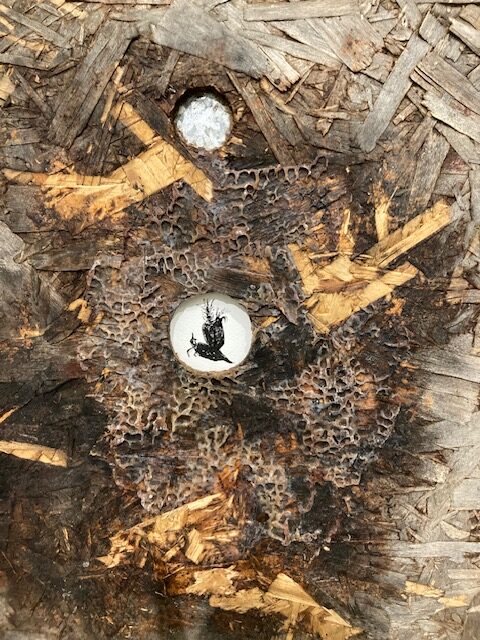
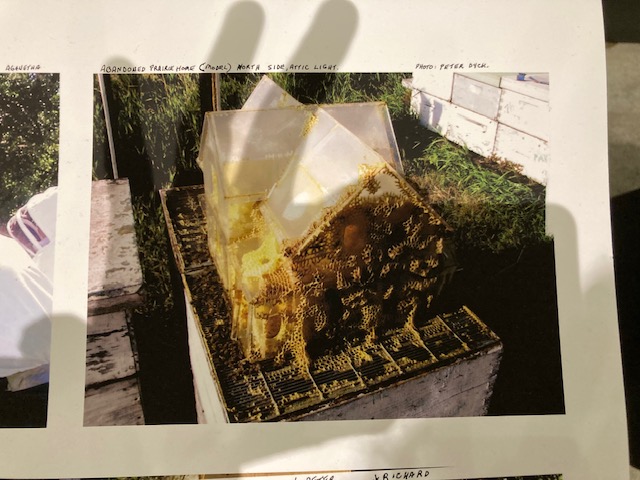
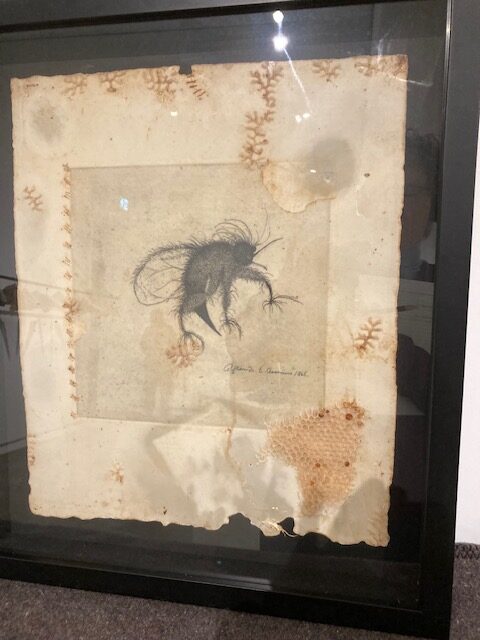
Material Response:
On site at the gallery, I began by drawing bees – pen on mulberry paper or on wood shaving. Dipped the wood shaving in wax to get a feel for the process. With support from Angela and Chantal, went on to slip-cast two cup shapes in beeswax using a coffee cup form, incorporating the drawings, and then began to alter the forms.



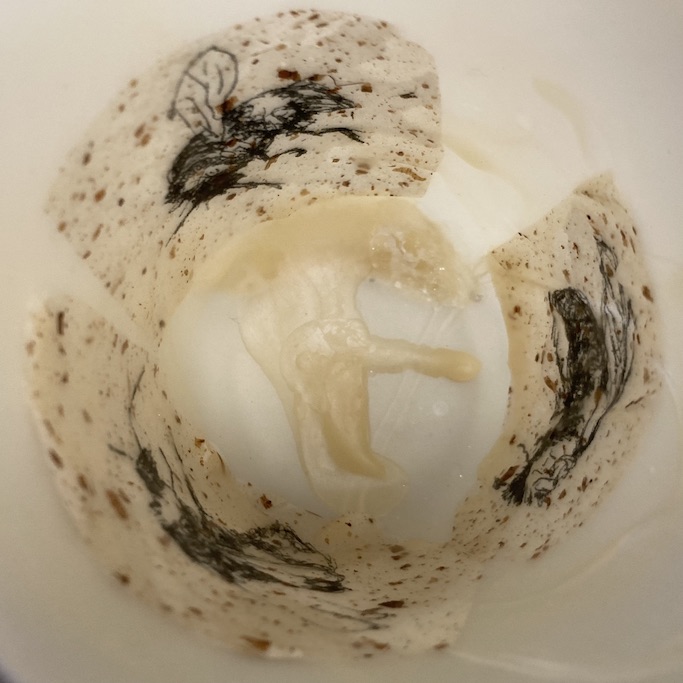
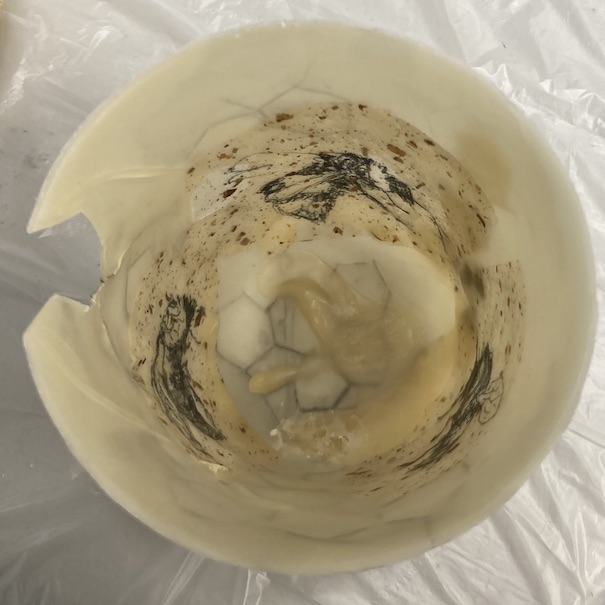

The images above are from the site visit — drawing, dipping the drawing on wood in the wax, slip-casting the cup shapes in beeswax with a coffee cup form, and starting to alter. The images below are the final versions, after a few hours messing around at home:






I was interested in responding to Aganetha, which informed both my pieces. The darker one was first. I was keen to connect the piece to the honeycomb shapes the bees had added to her drawings, so I began by cutting a hexagonal pattern in the cup, and rubbing india ink into the crevices. I also cut some hexagonal windows out of the outer layer of wax, so the bee drawings were more visible, and I fixed those spare hexagons of wax back on to the exterior of the cup. The hexagons further developed at home when I thought of the black sculpture wire we had used in unit 1, and I shaped a wire stand with hexagonal base for the piece.
The second piece came from my response to Aganetha’s crocheted/knitted sculptures – I crocheted a small round piece out of icelandic sweater wool I had at home, and found a way to stitch it onto the cup, leaving some whimsical woolly wisps. I also like that it looks a bit like a handle when the cup is set right-side up, referencing the original form we used to manufacture the pieces.
And finally – I really wanted a beeswax candle involved, after inhaling the heady beeswax scent for several hours, so I took a few photos by candlelight…
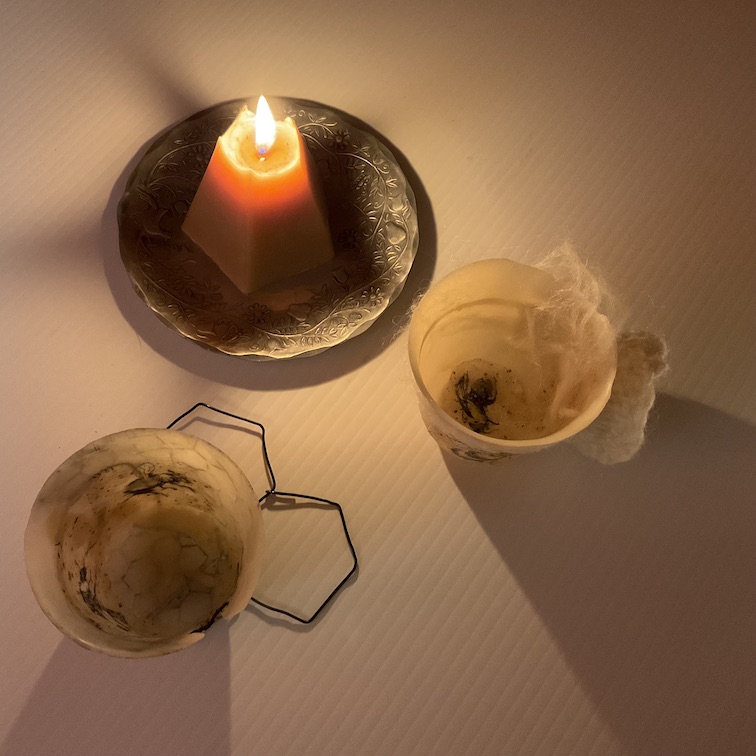


Oct 17 in studio – supplies for wax-dipping on hand – I had found some of my old origami tessellations at home that had beehive patterns, and wanted to explore dipping the paper and shaping it in a way that would stand in relationship to the cups. One was folded out of newsprint, the other out of kraft paper — I first experimented with dipping and shaping small pieces of both types of paper; then with the already-made larger folded origamis; then with a new fold I made at the studio – a 32-grid hexagon of kraft paper folded into continuous hexagonal shapes. The latter two dips were risky! and exciting! as I just had to dunk the whole thing in then quick-shape by hand. Really pleased with how the beeswax interacted with the paper especially during stressing/folding movements, as it made the hexagons deeper and more visible. Also, the wax allowed me to turn the flat-folded paper into a form with inside/outside, depth and a variety of possible postures. Quite a thrill…
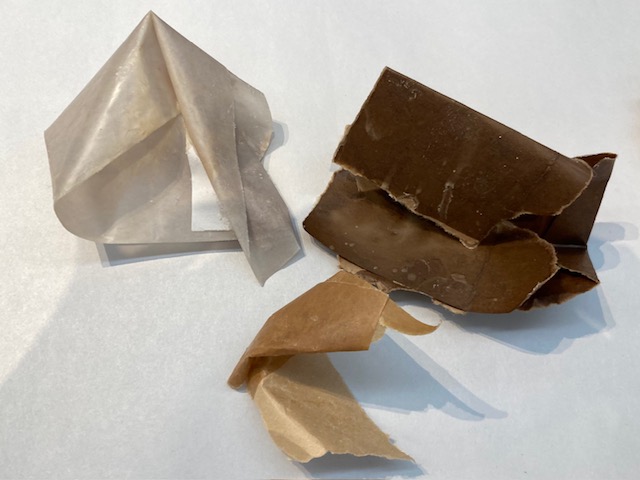
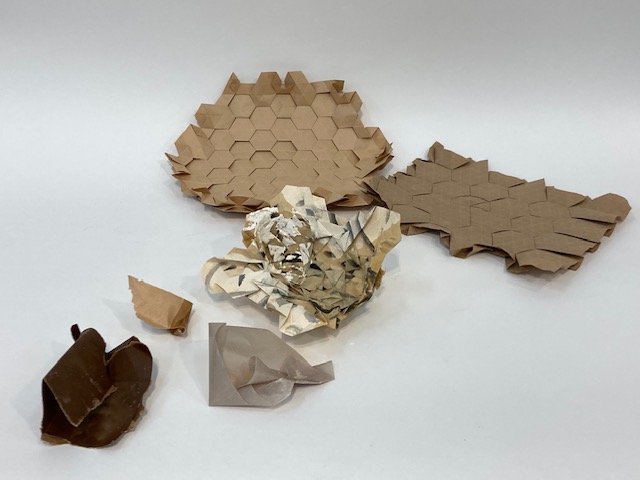
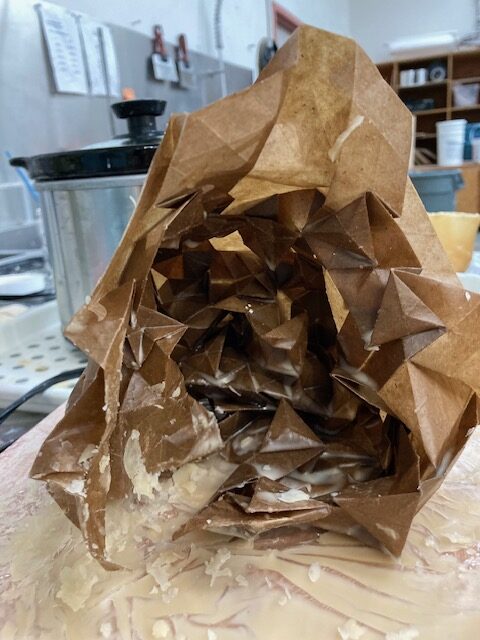
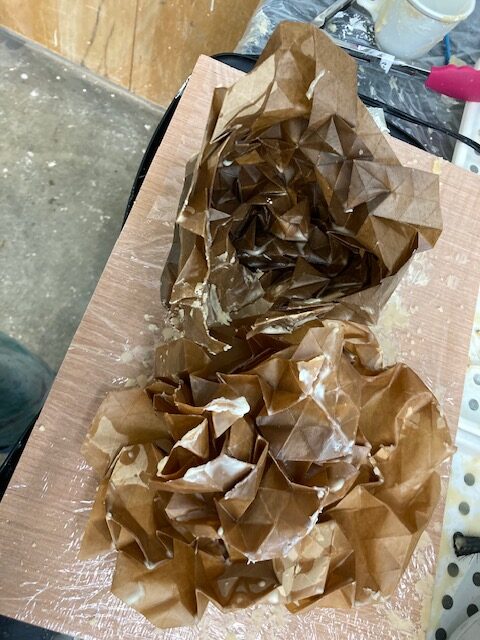
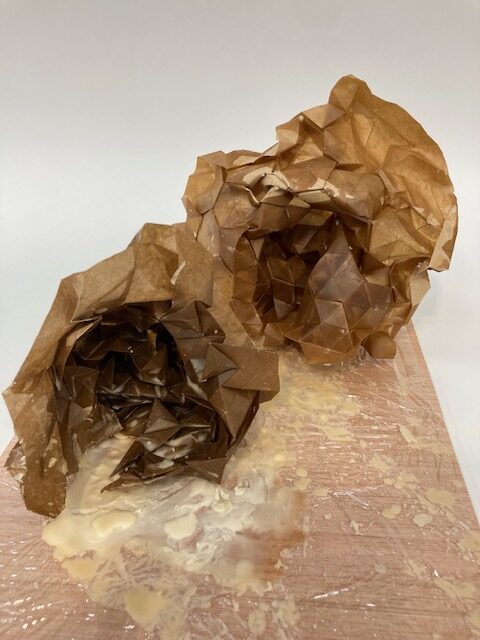

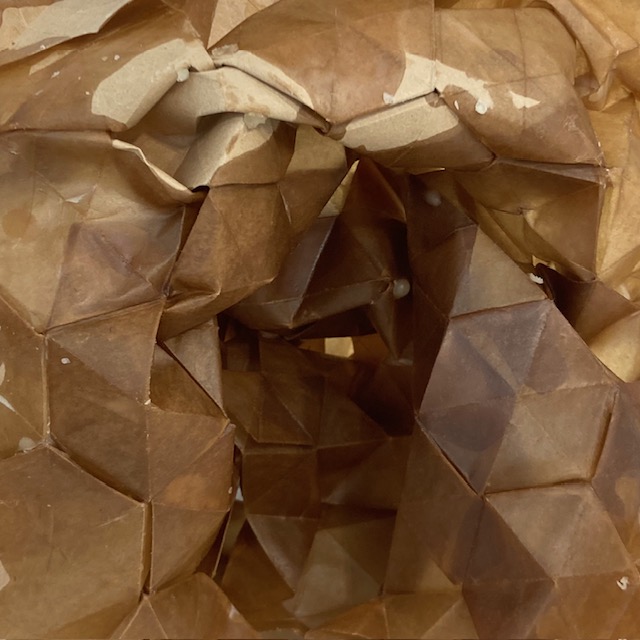
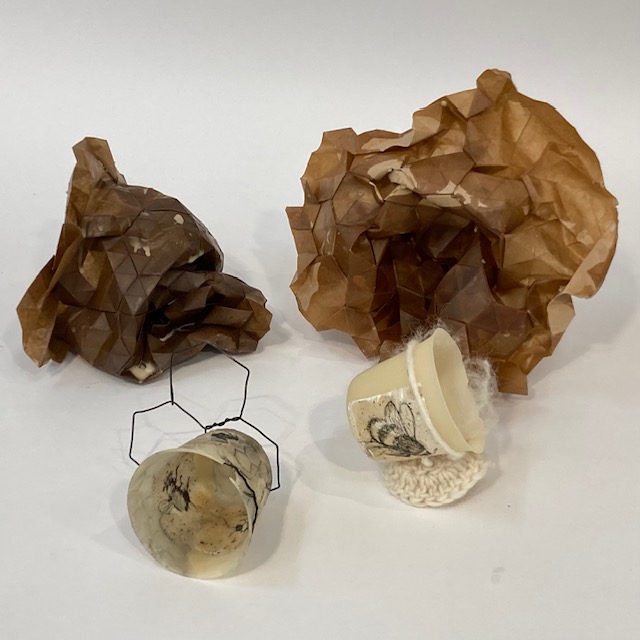
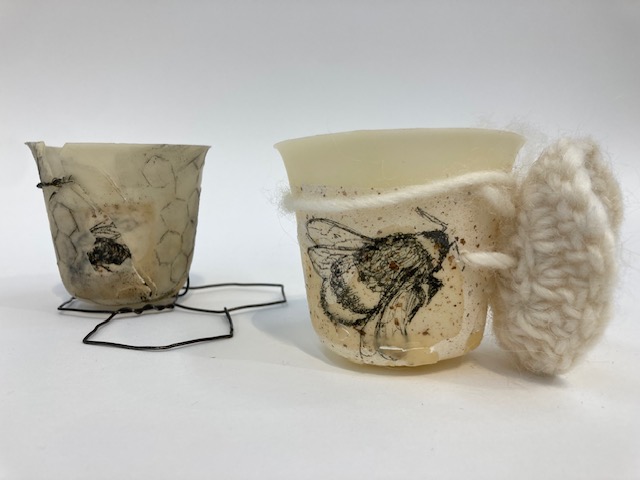
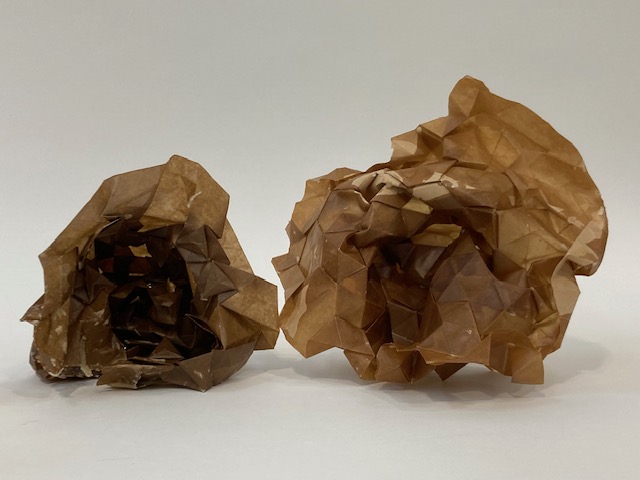
Reflections Oct 23: I’ve been yearning for a way to incorporate origami into what I’m learning at NIC, as it pre-dated my “art school” life. Previously I had imagined making marks on the paper in a way that would enhance the origami, so I hoped to learn about mark-making, drawing. Then Aganetha Dyck appears — she draws on paper then invites the bees to wax it up; she washes and agitates knitted items until they are profoundly altered by shrinking; she co-creates sculptures with the bees from cloth, toys, shoes, and wax. It all involves a great deal of letting go, loss of control, acceptance of serendipity. I took some baby steps in that direction with this project — first by dunking my “precious” drawings (okay they were pretty quick sketches really) in layers of wax. Gave me courage to stretch further, dunking large origami tessellations entirely into the wax bath, then having only seconds to deform them, see what shapes and patterns might emerge. I can see that this might become addictive.
